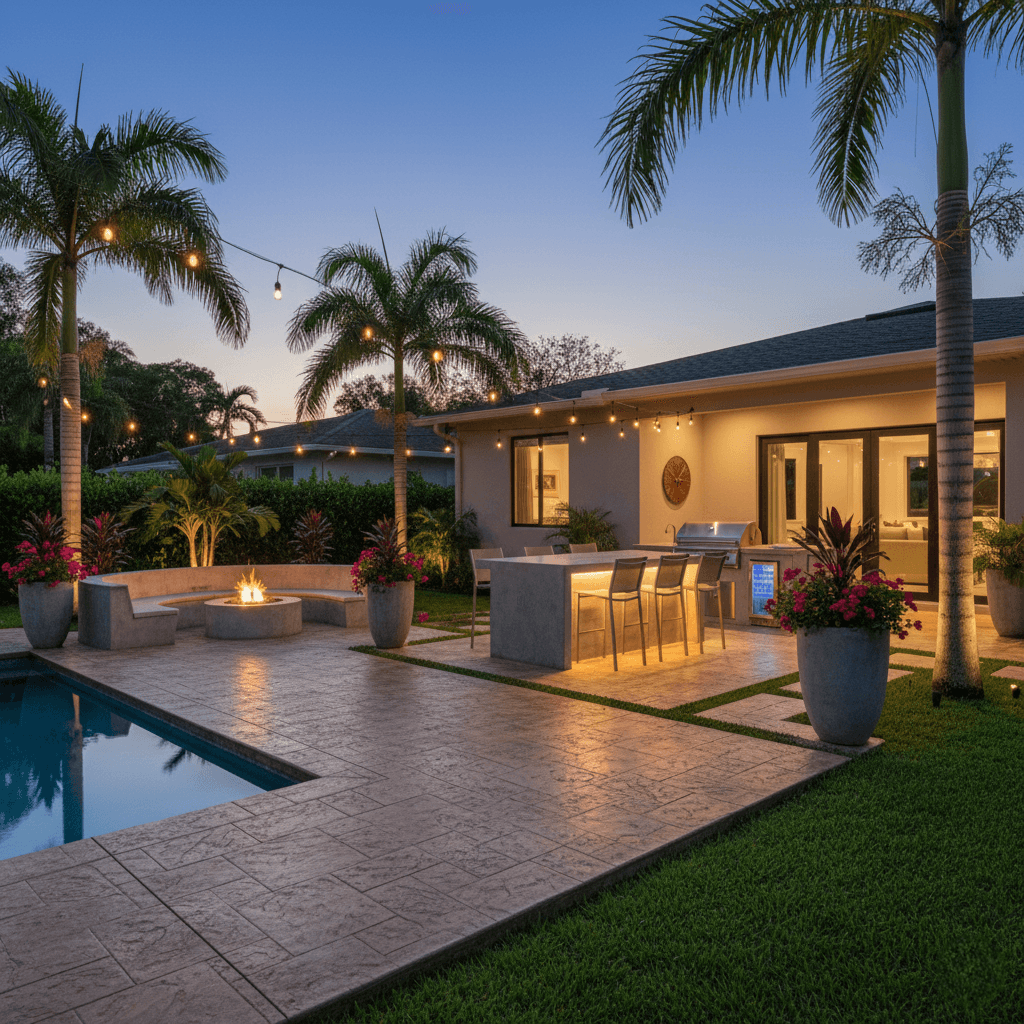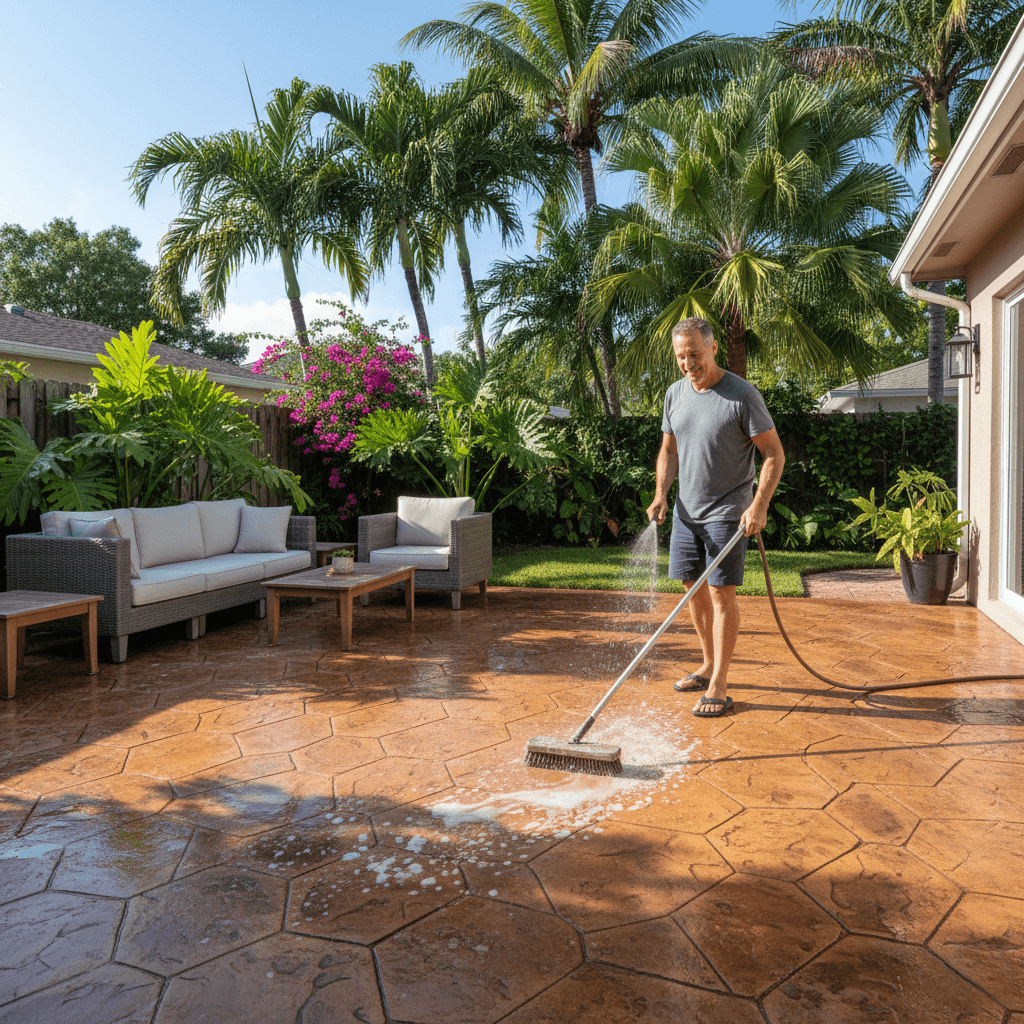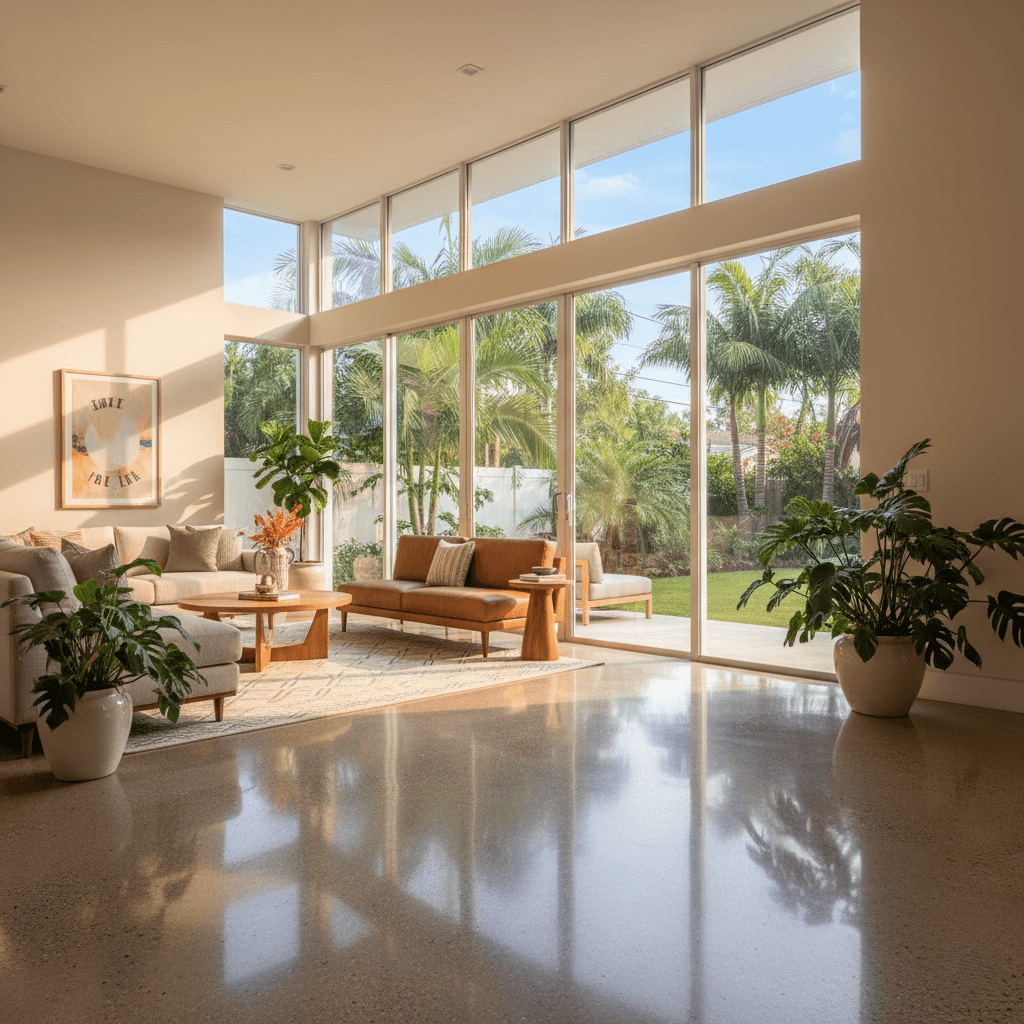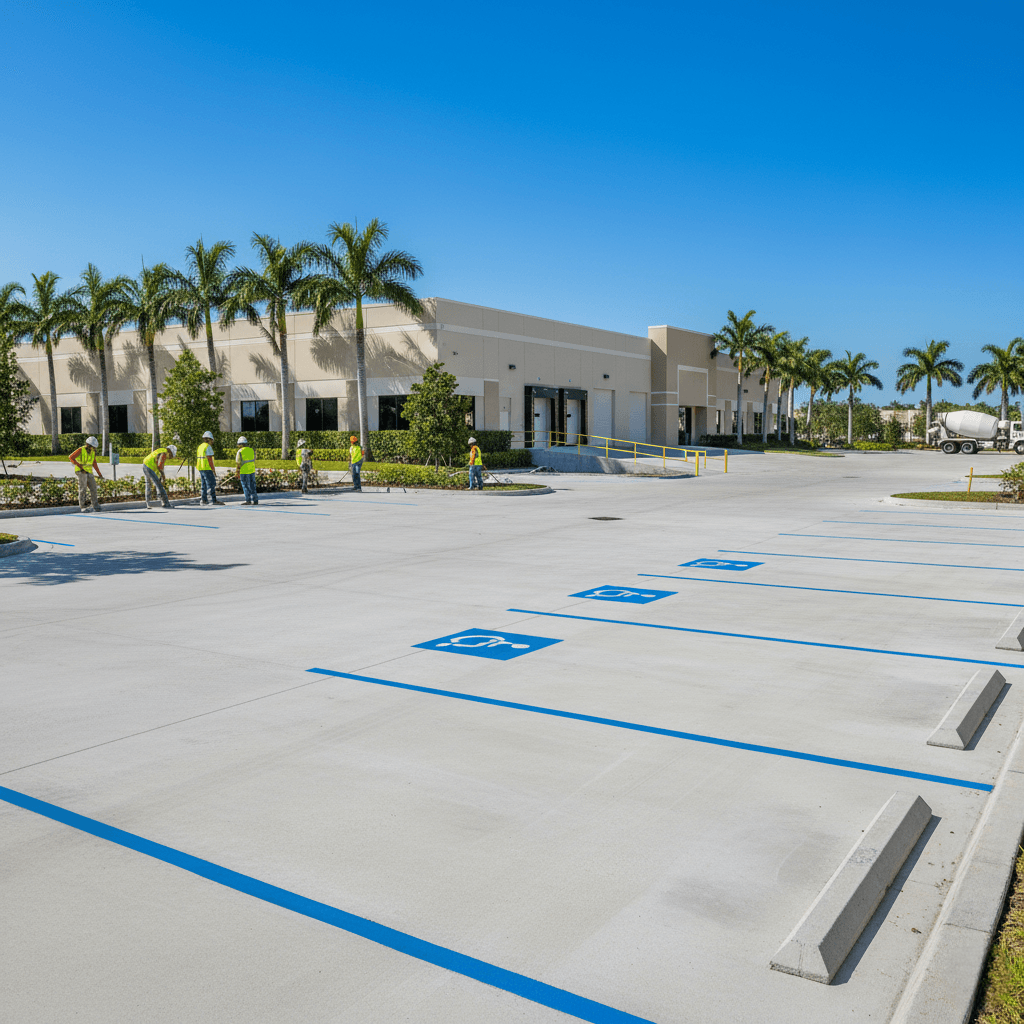
Miami Gardens Guide to Concrete Resurfacing
Concrete Resurfacing Miami Gardens
Concrete surfaces throughout Miami Gardens face constant challenges from heavy use, intense sun exposure, frequent rainfall, and the passage of time. Driveways, patios, walkways, and pool decks that once looked pristine gradually develop surface wear, minor cracks, discoloration, and texture deterioration. Rather than undertaking expensive and disruptive complete replacement, homeowners increasingly turn to resurfacing as a practical solution that restores appearance and extends service life. Understanding this process and recognizing its advantages helps property owners make informed decisions about maintaining and enhancing their concrete surfaces while managing costs effectively.
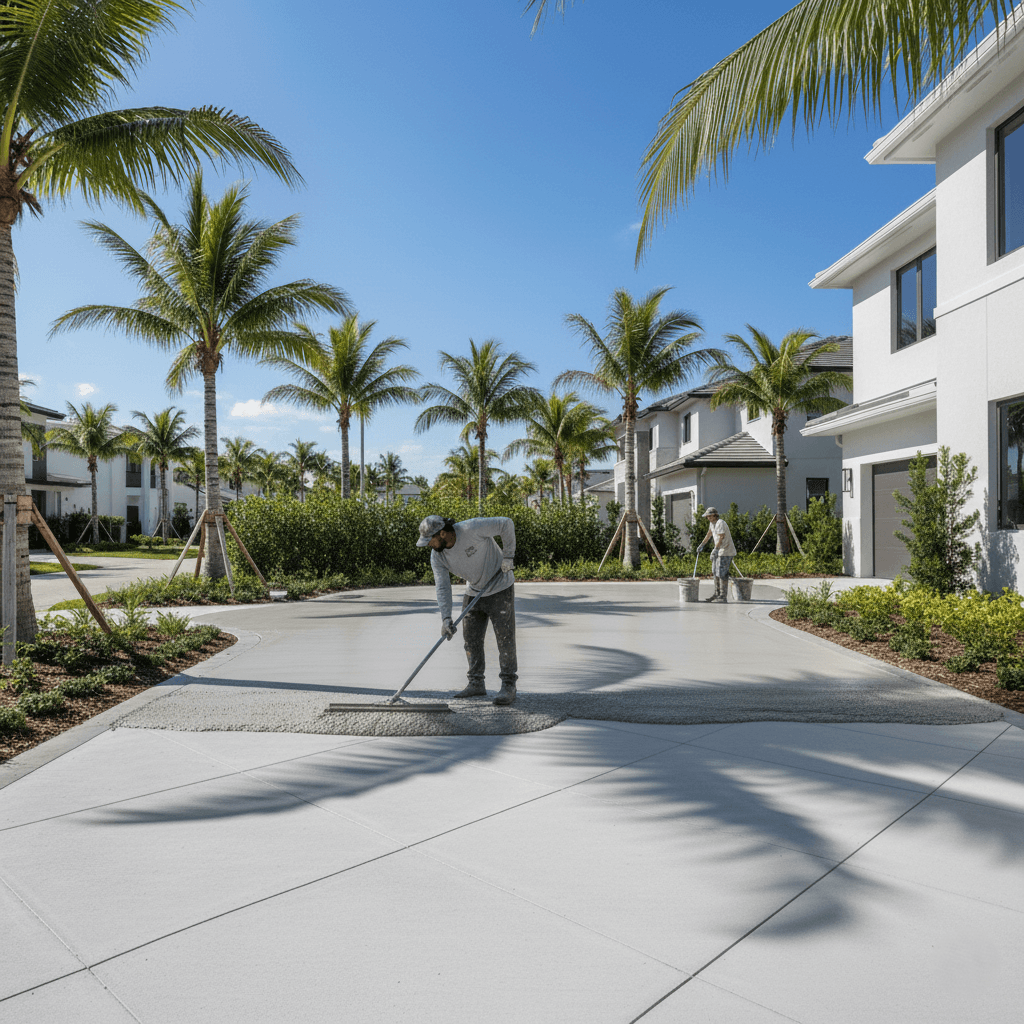
Understanding Concrete Resurfacing
Concrete resurfacing involves applying a specialized overlay material directly onto existing concrete surfaces. This technique creates a fresh, new surface layer that covers minor imperfections, restores uniform appearance, and provides renewed protection against wear and weathering. The overlay typically ranges from one-eighth to one-quarter inch thick, bonding chemically and mechanically to the prepared substrate beneath.
Modern resurfacing compounds combine Portland cement, polymer modifiers, and fine aggregates engineered specifically for superior adhesion and durability. These advanced formulations resist cracking, provide excellent weather resistance, and accommodate thermal expansion and contraction better than traditional concrete repair methods. Properties throughout the Norland neighborhood or near Lake Lucerne benefit from these technological improvements that deliver reliable, long-lasting results in South Florida’s demanding climate.
When Resurfacing Makes Sense
Resurfacing proves most effective for structurally sound concrete displaying cosmetic or surface-level problems. Ideal candidates include surfaces with minor cracking less than one-quarter inch wide, surface spalling or pitting, discoloration from age or staining, rough or uneven texture, and faded appearance. The underlying concrete must remain stable, without significant settling, heaving, or structural damage. Surfaces experiencing active movement or possessing deep structural cracks exceeding two inches in depth require different repair approaches or complete replacement.
The Resurfacing Process Step by Step
Successful resurfacing demands meticulous attention to each phase. Shortcuts or improper techniques compromise results and waste resources. Professional contractors follow proven procedures that ensure optimal adhesion, uniform appearance, and maximum longevity. The process begins with comprehensive surface evaluation and preparation, progresses through careful material application, and concludes with proper curing and finishing.
Surface Preparation and Cleaning
Thorough preparation represents the most critical phase determining project success. Contractors begin by power washing surfaces with pressure washers generating at least 3,500 PSI. This aggressive cleaning removes dirt, debris, oil stains, old sealers, loose concrete particles, and contaminants that prevent proper overlay adhesion. Properties near Hard Rock Stadium or throughout the Carol City area often accumulate significant surface contamination requiring specialized cleaning agents for stubborn stains.
After initial cleaning, professionals address existing damage. Cracks wider than hairline dimensions receive filling with appropriate patching compounds. Workers grind down high spots and fill depressions to create reasonably level substrates. Control joints need cleaning and preparation to accommodate overlay placement. Some applications require mechanical surface profiling using grinders or scarifiers that roughen the substrate, creating texture that enhances mechanical bonding between old concrete and new overlay.
Material Mixing and Application
Resurfacing materials arrive as dry powder requiring mixing with water according to precise manufacturer specifications. Proper consistency proves crucial for workability and final performance. Too much water weakens the overlay and causes excessive shrinkage. Insufficient water creates material too stiff for proper application and consolidation. Contractors typically mix small batches to maintain workability before the material begins setting, usually within 20 to 30 minutes, depending on temperature conditions.
Before applying the overlay, workers dampen the prepared substrate to a saturated surface dry condition. This prevents the porous concrete from absorbing water from the overlay too quickly, which would compromise curing and bonding. Application proceeds systematically using squeegees or specialized trowels that spread material evenly across surfaces. Workers maintain consistent thickness while eliminating air pockets and ensuring complete coverage. Large areas may require sequential pours to maintain quality control before the material hardens.
Finishing Techniques and Options
Surface finishing occurs while the overlay material remains workable. Standard broom finishes provide slip resistance and a practical appearance suitable for most applications. Workers drag soft-bristle brooms across surfaces, creating subtle texture. Smooth trowel finishes deliver sleek, contemporary looks appropriate for pool decks or modern patios throughout the Bunche Park community or near the Palmetto Expressway.
Decorative finishing options expand design possibilities significantly. Stamped overlays replicate natural stone, brick, tile, or wood plank patterns. Color hardeners and stains create custom hues matching specific design preferences. These decorative treatments transform ordinary surfaces into attractive focal points that enhance property aesthetics and value. The versatility of finishing options makes resurfacing appealing for homeowners seeking both functional restoration and aesthetic improvement.
Curing and Protection
Proper curing ensures the overlay achieves full strength and durability. Contractors apply curing compounds immediately after finishing to slow moisture evaporation. These membrane-forming products allow proper cement hydration while preventing premature drying that causes surface weakness and cracking. Some applications benefit from periodic misting with water or covering with plastic sheeting to maintain moisture levels during initial curing phases.
Most resurfaced surfaces support foot traffic within 24 hours under normal conditions. Vehicle traffic typically requires 48 to 72 hours before surfaces achieve adequate strength. Full curing continues for weeks, with surfaces gaining strength throughout this period. Sealer application occurs after complete curing, typically 28 days following overlay placement, providing final protection against staining, moisture penetration, and weather exposure.
Cost Effectiveness Compared to Replacement
Financial considerations heavily influence material restoration decisions. Concrete resurfacing delivers substantial cost savings compared to complete replacement while providing comparable aesthetic improvements. Resurfacing typically costs three to seven dollars per square foot, including materials and professional installation. Complete replacement ranges from ten to twenty dollars per square foot once demolition, disposal, new material, and labor expenses accumulate.
Beyond direct cost differences, resurfacing eliminates disposal fees, reduces project timelines, and minimizes property disruption. Homeowners avoid the mess and inconvenience associated with jackhammering, hauling debris, and extended construction periods. These factors make resurfacing particularly attractive for occupied properties where minimizing disruption maintains quality of life during improvements. Properties throughout Scott Lake or near Rolling Oaks appreciate the efficiency and cost control that resurfacing provides.
Long-Term Value Considerations
While resurfacing costs less initially, understanding realistic service life expectations helps evaluate true value. Properly applied overlays typically last eight to fifteen years, depending on traffic levels, maintenance quality, and climate exposure. This lifespan provides excellent return on investment compared to replacement costs. Regular maintenance, including periodic cleaning and resealing every two to three years, extends service life and maintains appearance throughout the overlay’s functional period.
Aesthetic Transformation Possibilities
Resurfacing offers remarkable design flexibility that allows for a complete surface transformation. Homeowners dissatisfied with plain gray concrete can select from extensive color palettes, pattern options, and texture choices. This customization capability transforms utilitarian surfaces into attractive landscape features that enhance overall property appeal and complement architectural styles.
Color options extend beyond basic concrete gray to include earth tones, contemporary grays, warm terracotta hues, and custom blends. Multiple color applications create depth and variation, mimicking natural materials. Pattern stamping replicates flagstone, slate, cobblestone, brick, wood planking, and countless other designs. These decorative possibilities previously required expensive natural materials or individual pavers. Resurfacing delivers a similar visual impact at significantly reduced costs while maintaining the structural integrity and seamless characteristics of continuous concrete surfaces.
Improved Surface Durability
Modern overlay formulations provide superior resistance to wear, staining, and weather exposure compared to standard concrete. Polymer additives enhance flexibility, allowing overlays to accommodate minor substrate movement without cracking. Chemical resistance protects against staining from oils, chemicals, and organic materials. UV-resistant pigments prevent fading common with lower-quality coloring systems.
The sealed, uniform surface created through resurfacing proves easier to clean and maintain than aged, deteriorated concrete. Smooth, consistent texture eliminates porous areas that trap dirt and harbor staining. Regular cleaning with simple detergent solutions keeps resurfaced areas looking fresh. Properties near the Andover area or throughout Vista Verde benefit from these durability improvements that reduce ongoing maintenance demands while preserving an attractive appearance.
Climate-Specific Performance
South Florida’s humid subtropical climate poses specific challenges that quality resurfacing materials address effectively. High humidity, intense UV exposure, frequent rainfall, and warm temperatures demand materials engineered for these conditions. Modern overlay systems incorporate moisture barriers, UV stabilizers, and thermal expansion accommodations that ensure reliable performance throughout Miami Gardens’ climate extremes.
Faster Project Completion
Timeline considerations influence project planning and household disruption management. Resurfacing projects are typically complete within one to three days for residential applications, depending on surface area and complexity. This expedited schedule minimizes inconvenience compared to replacement projects requiring week-long timelines or longer. Demolition alone consumes substantial time before new concrete placement even begins.
The streamlined process means homeowners regain use of their outdoor spaces quickly. Foot traffic resumes within 24 hours, and most activities can continue within two to three days. This rapid turnaround proves particularly valuable for families with active lifestyles or properties hosting events. The ability to restore surfaces efficiently without extended periods of limited access makes resurfacing appealing for busy households throughout Miami Gardens.
Environmental Considerations
Sustainability-minded homeowners appreciate that resurfacing conserves resources and reduces waste compared to replacement. Existing concrete remains in place, eliminating demolition debris requiring landfill disposal. Reduced material consumption lowers the environmental footprint associated with cement production, a significant contributor to carbon emissions. Transportation impacts diminish with smaller material quantities needed for thin overlays versus full-depth replacement.
The extended service life that resurfacing provides delays eventual replacement needs, further reducing long-term resource consumption. Multiple resurfacing cycles over a concrete surface’s lifespan maximize value from original material investments while minimizing disposal and replacement impacts. These environmental benefits align with growing awareness about construction sustainability and responsible resource management.
Limitations and Realistic Expectations
While resurfacing offers numerous advantages, understanding its limitations prevents disappointment and inappropriate applications. The technique cannot fix structural problems, including significant cracking from settling, active movement, or inadequate base preparation. Surfaces experiencing ongoing settlement, heaving, or substrate deterioration require addressing underlying issues before resurfacing becomes viable.
Overlay materials bond to existing surfaces but cannot prevent problems originating below. Attempting to resurface compromised concrete wastes resources and leads to premature failure. Honest professional assessment determines whether surfaces qualify as suitable resurfacing candidates. Sometimes, addressing foundation issues, performing repairs, or proceeding with replacement represents the appropriate course despite higher costs.
Professional Installation Importance
Achieving quality results requires experienced contractors familiar with proper techniques, material selection, and application procedures. Surface preparation demands specialized equipment and knowledge about cleaning, profiling, and repair procedures. Material mixing requires precision, and application techniques significantly impact final appearance and performance. Timing proves critical as overlay materials offer limited working windows before hardening begins.
Professional contractors bring expertise developed through extensive project experience. They understand how Miami Gardens’ climate affects material behavior, proper curing requirements, and finishing techniques that deliver desired results. Equipment investments, including pressure washers, mixers, specialized trowels, and finishing tools, enable efficient, high-quality work. The value that experienced professionals provide typically outweighs cost differences between DIY attempts and professional services.
Making Informed Decisions
Evaluating whether resurfacing suits specific situations requires considering multiple factors, including current surface condition, budget constraints, aesthetic goals, and timeline requirements. Surfaces displaying primarily cosmetic problems with sound underlying structure represent ideal candidates. Limited budgets benefit from resurfacing’s cost-effectiveness while still achieving significant improvements. Desire for decorative enhancement finds excellent expression through resurfacing’s design flexibility.
Conversely, surfaces with major structural issues, active cracking, or significant settling need different approaches. Very old concrete approaching the end of its service life may warrant replacement rather than investing in resurfacing or temporary solutions. Consulting qualified professionals provides objective assessments and recommendations based on individual circumstances. Miami Gardens Concrete Pros brings extensive experience evaluating concrete conditions and determining optimal restoration strategies. Our team understands local climate challenges and employs proven resurfacing techniques that deliver lasting results. From initial assessment through final sealing, we handle every aspect of the resurfacing process with attention to quality and customer satisfaction that transforms worn surfaces into attractive, durable features, enhancing property value and enjoyment for years ahead.

